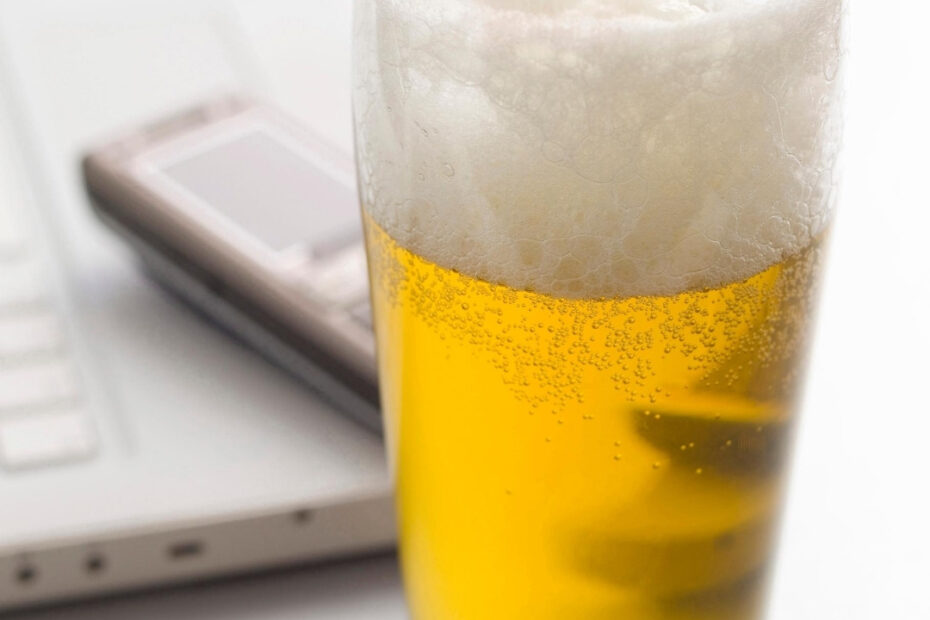Brewing a lager is often intimidating due to the usual need for increased fermenting equipment. However, without brewing lagers, you are missing out on delicious styles including pilsners, bocks, and the ever popular Oktoberfest! In this article, I will show you how to brew a lager without a fridge or other expensive temperature control equipment.
What is a Lager?
Let’s start out by discussing what a lager is and what differentiates it from other beers.
A lager is a beer that is fermented with a bottom-fermenting yeast at colder temperatures (45–55 °F (7–13 °C)). The yeast strain that is used is most often is Saccharomyces pastorianus.
This is differentiated from an ale as ales are fermented with top-fermenting yeasts at warmer temperatures (55–70 °F (13–21 ºC)). Yeast strain that is used for ales is usually Saccharomyces cerevisiae.
Typical Lagering Schedule
The typical lagering schedule involves primary fermentation, generally around 48°F (9°C), for 2 weeks. Then it is important to perform a diacetyl rest where the yeast ‘cleans up’ byproducts of its initial fermentation. During the diacetyl rest, the beer is warmed to up to 58°F (14°C) for 1-3 days. Then, the lagering period begins as the temperature is decreased by 2-4°F daily until the beer reaches 31°F (-1°C). The beer is then held at this temperature for 4-12 weeks. After this period, the beer can be either bottled or kegged.
As you can see, lagering a beer is very time-consuming and can be unforgiving if the beer is allowed to warm during the process.
An alternative is to use a lager yeast with a higher range of fermentation temperature. Please continue reading below for more details!
Yeast Choice Matters
When lagering a beer without a fridge, you will want to choose a yeast that is more forgiving and doesn’t have an extremely small temperature window.
SafLager 34/70 is the yeast that I have the most experience with, and I have fermented pilsners, bocks, and vienna lagers with good success.
However, other brewers have had good success with both Mangrove Jack M54 California Lager Yeast and Wyeast 2112 California Lager Yeast.
Warm Fermenting a Lager
The term ‘warm fermenting’ is somewhat of a misnomer. You will not be fermenting a lager at truly warm temperatures (90°F) like you would with, say, a Kviek yeast.
However, you will be fermenting the beer in a range more associated with ale yeasts.
It is important to use one of the yeasts noted above instead of just any lager yeast to avoid off-flavors.
Try to pitch the yeast as low as you can reasonably get the temperature. If you are able to get the beer down to 40-45°F, that is ideal, but pitching at 55°F will be better than 65°F. The beer will slowly rise to ambient temperature over the next couple days.
Even though you will be using a more forgiving lager strain, it is still very important to avoid any large fluctuations in temperature.
Another consideration when using lager yeasts vs ale yeasts is that you will generally need a larger volume of yeast. I generally pitch a full packet of lager yeast for a 1-2 gallon batch.
Advantages:
The biggest advantage to using this method is the decreased need for a fermentation chamber (fridge). You are still able to use the same exact fermenting equipment and space that you would use when fermenting ales.
However, another benefit is the decreased time necessary vs truly lagering. Using this method, you can generally have a beer ready to package in 2 weeks vs 6-18 weeks.
Limitations:
Now am I going to sit here and tell you that you are going to make the same quality lager fermenting at room temperature as you would in a temperature-controlled fridge?
Unfortunately no. The crispness and mellowness that comes with an extended period of time spent at near freezing temperatures does wonders for lagers.
However, many of us lack the finances and space for a true fermentation chamber, and using the warm-fermented lager technique can produce some very good imitations of true lagered beers!
Another limitation is that you will not get the clarity benefit that you would when truly lagering a beer. Due to this fact, you may want to either filter the beer or use clarifying agents.
I hope this article has helped you, and inspired you to broaden your brewing horizons to include lagered beers!
If you are interested in recipes that use this warm-fermented lager technique, please follow these links for my Oktoberfest and Doppelbock recipes.
If you are interested in reading more about brewing lagers or just interested in good all-around brewing advice, I highly recommend New Brewing Lager Beer by Gregory Noonan.
